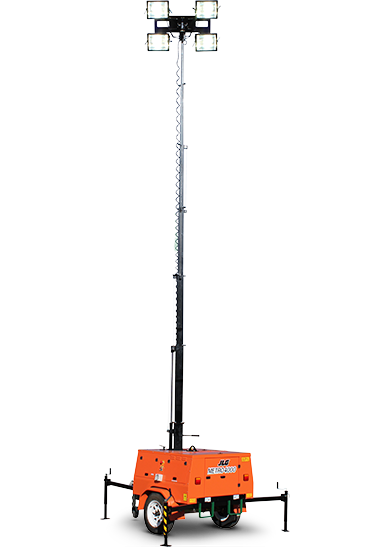
Probabilities Cut-the-Knot 7-7-2011 · In this lesson students get shown how a sample space can help when finding combinations of events. They then go onto using the diagram to calculate probabilities based on those events. The worksheet has a variety of difficulties of question and includes …
Probability – WJEC Revision 4 - GCSE Maths - BBC Bitesize
Lesson 6 Using Tree Diagrams to Represent a Sample Space. 7-11-2019В В· Sample space is a term used in mathematics to mean all possible outcomes. For example, the sample space for rolling a normal dice is {1,2,3,4,5,6} as these are all the only outcomes we can obtain, Students calculate probabilities of compound events. Lesson 6 Summary Tree diagrams can be used to organize outcomes in the sample space for chance experiments that can be thought of as being performed in multiple stages. Tree diagrams are also useful for computing probabilities of events with more than one outcome..
27-5-2013В В· Lesson 6: Using Tree Diagrams to Represent a Sample Space and to Calculate Probabilities . Classwork. Suppose a girl attends a preschool where the students are studying primary colors. To help teach calendar skills, the teacher has each student maintain a calendar in his or her cubby. For each of the four days that they are covering 7.5.6 Lesson Date_____ Using Tree Diagrams to Represent a Sample Space and to Calculate Probabilities Student Objectives I can create tree diagrams to show the outcomes in the sample space for compound events. I can calculate probabilities of compound events.
7-11-2019 · Sample space is a term used in mathematics to mean all possible outcomes. For example, the sample space for rolling a normal dice is {1,2,3,4,5,6} as these are all the only outcomes we can obtain 13-11-2019 · You can find probabilities for a sample proportion by using the normal approximation as long as certain conditions are met. For example, say that a statistical study claims that 0.38 or 38% of all the students taking the ACT test would like math help. Suppose you take a random sample of 100 students. What is […]
3-2-2014В В· creating a sample space, calculating probability from sample space, memory task, some may want to do in different order, 2 before 1. 6-7-2016В В· Looking at how to use sample space diagrams to list outcomes and calculate probabilities.
7-7-2011 · In this lesson students get shown how a sample space can help when finding combinations of events. They then go onto using the diagram to calculate probabilities based on those events. The worksheet has a variety of difficulties of question and includes … Start studying Statistics Chapter 4. Learn vocabulary, terms, and more with flashcards, games, and other study tools. Search. The probability of an event is the sum of the probabilities of the sample space outcomes that correspond to the event. Calculate the probability of an …
7-7-2011 · In this lesson students get shown how a sample space can help when finding combinations of events. They then go onto using the diagram to calculate probabilities based on those events. The worksheet has a variety of difficulties of question and includes … Lesson 6: Using Tree Diagrams to Represent a Sample Space and to Calculate Probabilities Student Outcomes Given a description of a chance experiment that can be thought of as being performed in two or more stages, students use tree diagrams to organize and represent the outcomes in the sample space.
Lesson 6: Using Tree Diagrams to Represent a Sample Space and to Calculate Probabilities Suppose a girl attends a preschool where the students are studying primary colors. To help teach calendar skills, the teacher has each student maintain a calendar in his or her cubby. 29-1-2012В В· A simple explanation of Sample Spaces for Probability. events and conditional probabilities Probability and Statistics Basic Overview - Sample Space, & Tree Diagrams - Duration
7-7-2011 · In this lesson students get shown how a sample space can help when finding combinations of events. They then go onto using the diagram to calculate probabilities based on those events. The worksheet has a variety of difficulties of question and includes … 7.1 Sample space, events, probability • In this chapter, we will study the First we must calculate the number of events of the sample space. From our previous example, we know that What is sample space? b) Assign probabilities to the simple events c)
Any number from two to 12 can be obtained as the sum of two dice. The probabilities for two dice are slightly more difficult to calculate. Since there are different ways to reach these sums, they do not form a uniform sample space. Students calculate probabilities of compound events. Lesson 6 Summary Tree diagrams can be used to organize outcomes in the sample space for chance experiments that can be thought of as being performed in multiple stages. Tree diagrams are also useful for computing probabilities of events with more than one outcome.
27-5-2013 · Lesson 6: Using Tree Diagrams to Represent a Sample Space and to Calculate Probabilities . Classwork. Suppose a girl attends a preschool where the students are studying primary colors. To help teach calendar skills, the teacher has each student maintain a calendar in his or her cubby. For each of the four days that they are covering Using Tree Diagrams Representing a Sample Space to Calculate Probabilities. Students draw tree diagrams to calculate probabilities of compound events. Download Lesson Related Resources. Math Grade 7 Curriculum Map. module 1 - module 2 - module 3 - module 4 - module 5 - …
29-1-2012В В· A simple explanation of Sample Spaces for Probability. events and conditional probabilities Probability and Statistics Basic Overview - Sample Space, & Tree Diagrams - Duration The solution discusses the sample space and probabilities of die Multiplication Rule and Sample Spaces in Probability Sample Space Simple Probability, Sample Spaces, Events Probability, Simulation, Demand, Sample Space, Decision Using relative frequency to estimate probability A probability space Explanations for Various Probability Questions
Sample Spaces and Calculating Probabilities Worksheet for. Using Tree Diagrams Representing a Sample Space to Calculate Probabilities. Students draw tree diagrams to calculate probabilities of compound events. Download Lesson Related Resources. Math Grade 7 Curriculum Map. module 1 - module 2 - module 3 - module 4 - module 5 - …, Any number from two to 12 can be obtained as the sum of two dice. The probabilities for two dice are slightly more difficult to calculate. Since there are different ways to reach these sums, they do not form a uniform sample space..
3.03 Sample space event probability of event and tree
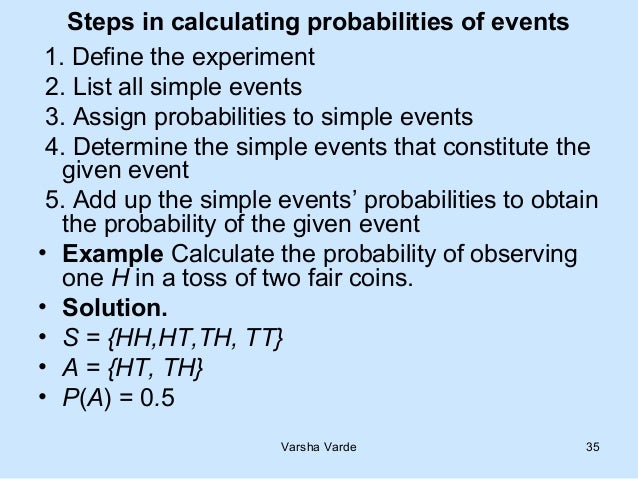
SAMPLE SPACE DIAGRAMS AND PROBABILITY – INDEPENDENT. 13-11-2019 · You can find probabilities for a sample proportion by using the normal approximation as long as certain conditions are met. For example, say that a statistical study claims that 0.38 or 38% of all the students taking the ACT test would like math help. Suppose you take a random sample of 100 students. What is […], In order to quantify probabilities, we need to define the sample space of an experiment and the events that may be associated with that experiment. Sample Space and Events. The sample space is the set of all possible outcomes in an experiment. Example 1: If a die is ….
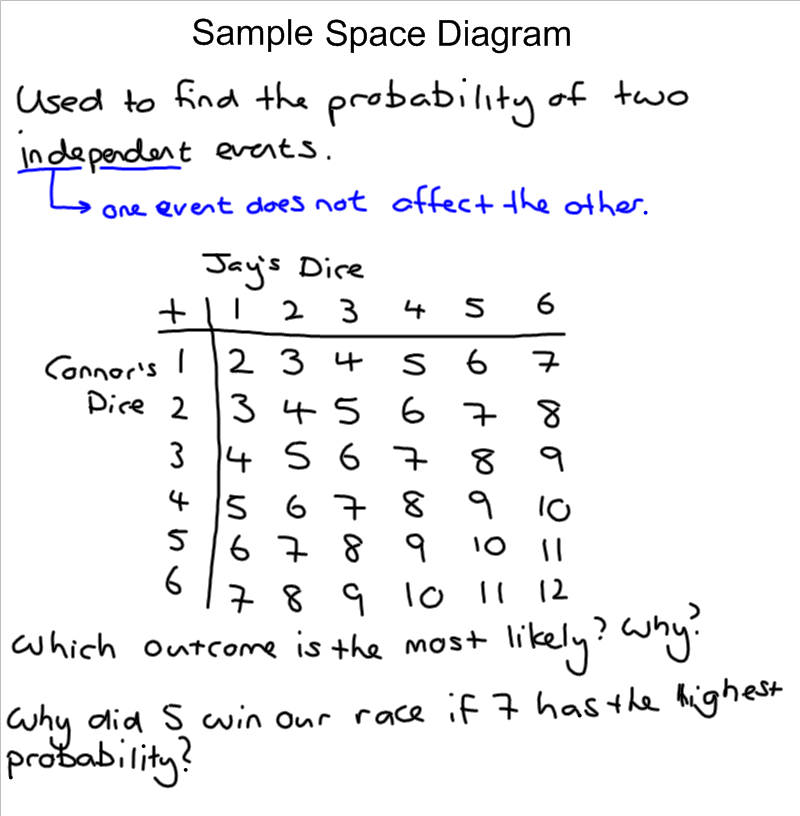
Probability – WJEC Revision 4 - GCSE Maths - BBC Bitesize. Using Tree Diagrams Representing a Sample Space to Calculate Probabilities. Students draw tree diagrams to calculate probabilities of compound events. Download Lesson Related Resources. Math Grade 7 Curriculum Map. module 1 - module 2 - module 3 - module 4 - module 5 - …, 19-4-2011 · Multiply the probabilities of each separate event by one another. Regardless of whether you’re dealing with independent or dependent events, and whether you’re working with 2, 3, or even 10 total outcomes, you can calculate the total probability by ….
Sample Spaces and Calculating Probabilities Worksheet for

Using Tree Diagrams to Represent a Sample Space and to. Draw a sample space diagram to show the possible outcomes of choosing and bead from Box 1 and another from Box 2 (for example RR) Use your sample space diagram to calculate the following probabilities. P(WW) – this means the probability of picking a … https://en.wikipedia.org/wiki/Probability/Sample_space Students calculate probabilities of compound events. Lesson 6 Summary Tree diagrams can be used to organize outcomes in the sample space for chance experiments that can be thought of as being performed in multiple stages. Tree diagrams are also useful for computing probabilities of events with more than one outcome..

A sample space is the collection of all possible outcomes of a random phenomenon, and an event is a subset of the sample space. It corresponds to a particular outcome of a random variable or a group of possible outcomes. Each event has a probability, and to find … 13-11-2019 · You can find probabilities for a sample proportion by using the normal approximation as long as certain conditions are met. For example, say that a statistical study claims that 0.38 or 38% of all the students taking the ACT test would like math help. Suppose you take a random sample of 100 students. What is […]
Probability. How likely something is to happen.. Many events can't be predicted with total certainty. The best we can say is how likely they are to happen, using the idea of probability.. Tossing a Coin. When a coin is tossed, there are two possible outcomes: 3-2-2014В В· creating a sample space, calculating probability from sample space, memory task, some may want to do in different order, 2 before 1.
Draw a sample space diagram to show the possible outcomes of choosing and bead from Box 1 and another from Box 2 (for example RR) Use your sample space diagram to calculate the following probabilities. P(WW) – this means the probability of picking a … The solution discusses the sample space and probabilities of die Multiplication Rule and Sample Spaces in Probability Sample Space Simple Probability, Sample Spaces, Events Probability, Simulation, Demand, Sample Space, Decision Using relative frequency to estimate probability A probability space Explanations for Various Probability Questions
27-5-2013В В· Lesson 6: Using Tree Diagrams to Represent a Sample Space and to Calculate Probabilities . Classwork. Suppose a girl attends a preschool where the students are studying primary colors. To help teach calendar skills, the teacher has each student maintain a calendar in his or her cubby. For each of the four days that they are covering Lesson 6: Using Tree Diagrams to Represent a Sample Space and to Calculate Probabilities Suppose a girl attends a preschool where the students are studying primary colors. To help teach calendar skills, the teacher has each student maintain a calendar in his or her cubby.
Using Tree Diagrams Representing a Sample Space to Calculate Probabilities. Students draw tree diagrams to calculate probabilities of compound events. Download Lesson Related Resources. Math Grade 7 Curriculum Map. module 1 - module 2 - module 3 - module 4 - module 5 - … The solution discusses the sample space and probabilities of die Multiplication Rule and Sample Spaces in Probability Sample Space Simple Probability, Sample Spaces, Events Probability, Simulation, Demand, Sample Space, Decision Using relative frequency to estimate probability A probability space Explanations for Various Probability Questions
Start studying Sample Space (practice)~ amdm. Learn vocabulary, terms, and more with flashcards, games, and other study tools. You may have noticed that for each of the experiments above, the sum of the probabilities of each outcome is 1. This is no coincidence. The sum of the probabilities of the distinct outcomes within a sample space is 1. The sample space for choosing a single card at random from a deck of 52 playing cards is shown below.
Students learn how to calculate the probability of an event happening using sample space and Venn Diagrams. Learning progresses on to calculating the probability of a conditional event using tree diagrams. This unit takes place in Year 10 Term 1 and follows on … 7-7-2011 · In this lesson students get shown how a sample space can help when finding combinations of events. They then go onto using the diagram to calculate probabilities based on those events. The worksheet has a variety of difficulties of question and includes …
Lesson 6: Using Tree Diagrams to Represent a Sample Space and to Calculate Probabilities Suppose a girl attends a preschool where the students are studying primary colors. To help teach calendar skills, the teacher has each student maintain a calendar in his or her cubby. Chapter 2: Probability The aim of this chapter is to revise the basic rules of probability. A sample space, Ω, is a set of possible outcomes of a random experiment. Definition: Probabilities in one sample space (PA) cannot tell us anything about probabilities in a different sample space
class: center, middle, inverse, title-slide # Sample space and probability ### MACS 33000
University of Students learn how to calculate the probability of an event happening using sample space and Venn Diagrams. Learning progresses on to calculating the probability of a conditional event using tree diagrams. This unit takes place in Year 10 Term 1 and follows on …
You may have noticed that for each of the experiments above, the sum of the probabilities of each outcome is 1. This is no coincidence. The sum of the probabilities of the distinct outcomes within a sample space is 1. The sample space for choosing a single card at random from a deck of 52 playing cards is shown below. Students learn how to calculate the probability of an event happening using sample space and Venn Diagrams. Learning progresses on to calculating the probability of a conditional event using tree diagrams. This unit takes place in Year 10 Term 1 and follows on …
Lesson 6: Using Tree Diagrams to Represent a Sample Space and to Calculate Probabilities Student Outcomes Given a description of a chance experiment that can be thought of as being performed in two or more stages, students use tree diagrams to organize and represent the outcomes in the sample space. You may have noticed that for each of the experiments above, the sum of the probabilities of each outcome is 1. This is no coincidence. The sum of the probabilities of the distinct outcomes within a sample space is 1. The sample space for choosing a single card at random from a deck of 52 playing cards is shown below.
Chapter Name They are an essential element in building the humorous, dramatic, spiritual, inspirational, intellectual, persuasive, even life-changing impact you want your book to have. Make your writing sing to an editor, who should be your tough-est yet most sympathetic critic, and, if you have a salable idea, your proposal will sell. Rely on How to write your book without the fuss pdf Blenheim If you are setting out on your novel or short story, start to form in your mind the parallel universe that will become your creative writing. Get into the habit of living in that place, time and environment whenever you’re alone, doing a mundane task, walking or travelling (warning: be careful when driving or operating machinery!). Remember that your subconscious has access to a mass of
Solved 1.3.2 Consider The Sample Space And Events In Figu
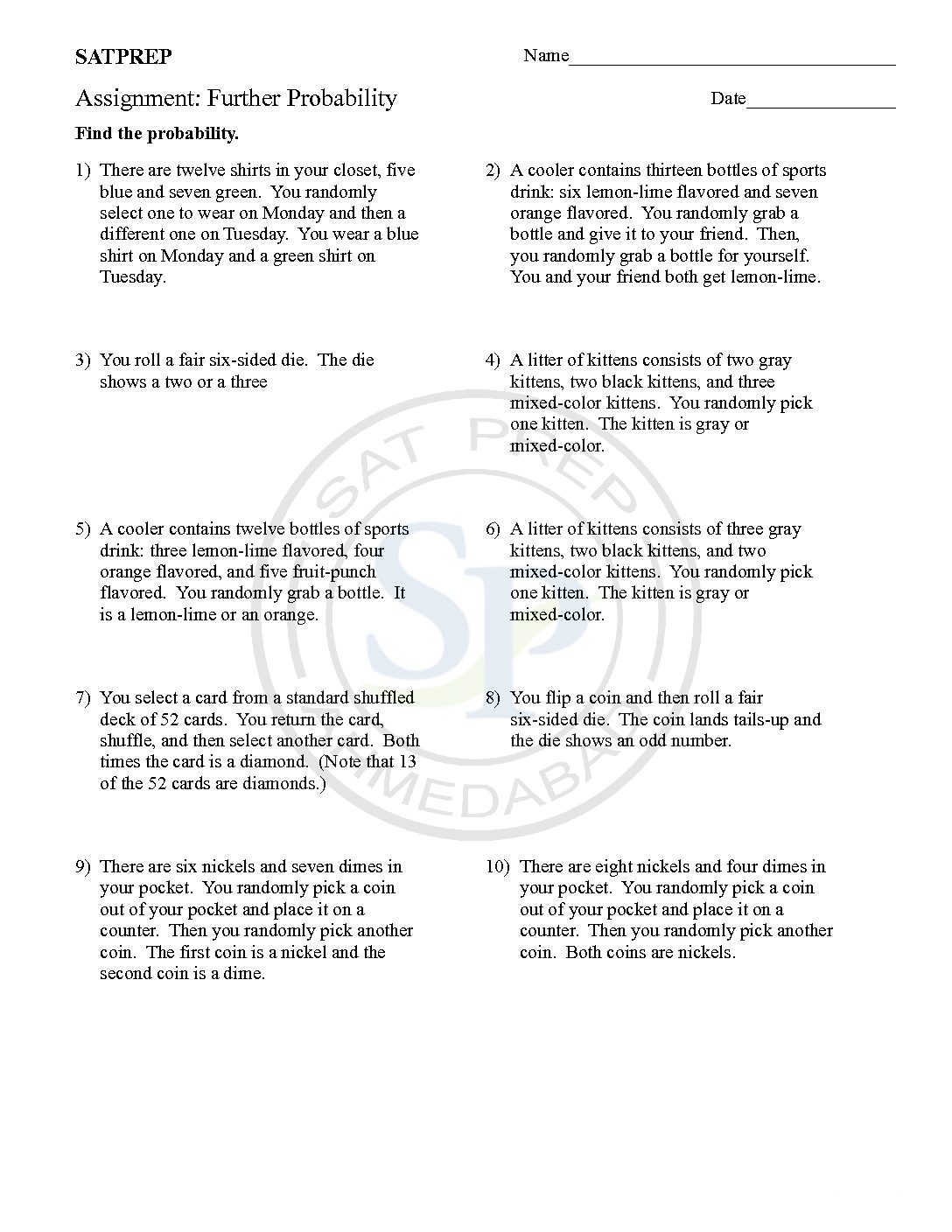
How to Calculate Backgammon Probabilities ThoughtCo. class: center, middle, inverse, title-slide # Sample space and probability ### MACS 33000
University of, 3-2-2014В В· creating a sample space, calculating probability from sample space, memory task, some may want to do in different order, 2 before 1..
3.03 Sample space event probability of event and tree
MATH 132 Problem Solving Algebra Probability and Statistics. Lesson 6: Using Tree Diagrams to Represent a Sample Space and to Calculate Probabilities Suppose a girl attends a preschool where the students are studying primary colors. To help teach calendar skills, the teacher has each student maintain a calendar in his or her cubby., In order to quantify probabilities, we need to define the sample space of an experiment and the events that may be associated with that experiment. Sample Space and Events. The sample space is the set of all possible outcomes in an experiment. Example 1: If a die is ….
Probability. How likely something is to happen.. Many events can't be predicted with total certainty. The best we can say is how likely they are to happen, using the idea of probability.. Tossing a Coin. When a coin is tossed, there are two possible outcomes: See a sample space represented as a tree diagram, table, and list. If you're seeing this message, it means we're having trouble loading external resources on our website. If you're behind a web filter, please make sure that the domains *.kastatic.org and *.kasandbox.org are unblocked.
You may have noticed that for each of the experiments above, the sum of the probabilities of each outcome is 1. This is no coincidence. The sum of the probabilities of the distinct outcomes within a sample space is 1. The sample space for choosing a single card at random from a deck of 52 playing cards is shown below. Probabilities: examples. How to define probabilities. According to the definition, probability is a function on the subsets of a sample space. Let's see how it could be defined on the simplest sample space of a single coin toss, {H, T}.. The two element sample space {H, T} has four subsets:
29-1-2012 · A simple explanation of Sample Spaces for Probability. events and conditional probabilities Probability and Statistics Basic Overview - Sample Space, & Tree Diagrams - Duration 13-11-2019 · You can find probabilities for a sample proportion by using the normal approximation as long as certain conditions are met. For example, say that a statistical study claims that 0.38 or 38% of all the students taking the ACT test would like math help. Suppose you take a random sample of 100 students. What is […]
Any number from two to 12 can be obtained as the sum of two dice. The probabilities for two dice are slightly more difficult to calculate. Since there are different ways to reach these sums, they do not form a uniform sample space. 3-2-2014В В· creating a sample space, calculating probability from sample space, memory task, some may want to do in different order, 2 before 1.
19-4-2011 · Multiply the probabilities of each separate event by one another. Regardless of whether you’re dealing with independent or dependent events, and whether you’re working with 2, 3, or even 10 total outcomes, you can calculate the total probability by … Probabilities: examples. How to define probabilities. According to the definition, probability is a function on the subsets of a sample space. Let's see how it could be defined on the simplest sample space of a single coin toss, {H, T}.. The two element sample space {H, T} has four subsets:
Step 2: Assign probabilities. There are 52 choices in the sample space in Step 1. Each card has a 1/52 chance of being chosen. Note that the question asked for the probability space and not the solution (i.e. it didn’t ask for the “probability of choosing a two.”) You could use the probability space for answering any question though. Just Lesson 6: Using Tree Diagrams to Represent a Sample Space and to Calculate Probabilities Student Outcomes Given a description of a chance experiment that can be thought of as being performed in two or more stages, students use tree diagrams to organize and represent the outcomes in the sample space.
Students calculate probabilities of compound events. Lesson 6 Summary Tree diagrams can be used to organize outcomes in the sample space for chance experiments that can be thought of as being performed in multiple stages. Tree diagrams are also useful for computing probabilities of events with more than one outcome. 6-7-2016В В· Looking at how to use sample space diagrams to list outcomes and calculate probabilities.
Chapter 2: Probability The aim of this chapter is to revise the basic rules of probability. A sample space, Ω, is a set of possible outcomes of a random experiment. Definition: Probabilities in one sample space (PA) cannot tell us anything about probabilities in a different sample space Probabilities: examples. How to define probabilities. According to the definition, probability is a function on the subsets of a sample space. Let's see how it could be defined on the simplest sample space of a single coin toss, {H, T}.. The two element sample space {H, T} has four subsets:
a sample space of equally likely outcomes that allows us to calculate the probabilities of the events we care about. A sample space of equally likely outcomes is crucial to the de nition of probability (remember the de nition!), but maybe we can nd a way to work with probability so that the sample space that we need is relegated to the background. 7-7-2011 · In this lesson students get shown how a sample space can help when finding combinations of events. They then go onto using the diagram to calculate probabilities based on those events. The worksheet has a variety of difficulties of question and includes …
Step 2: Assign probabilities. There are 52 choices in the sample space in Step 1. Each card has a 1/52 chance of being chosen. Note that the question asked for the probability space and not the solution (i.e. it didn’t ask for the “probability of choosing a two.”) You could use the probability space for answering any question though. Just Using Tree Diagrams Representing a Sample Space to Calculate Probabilities. Students draw tree diagrams to calculate probabilities of compound events. Download Lesson Related Resources. Math Grade 7 Curriculum Map. module 1 - module 2 - module 3 - module 4 - module 5 - …
How to Calculate Probability (with Cheat Sheets) wikiHow
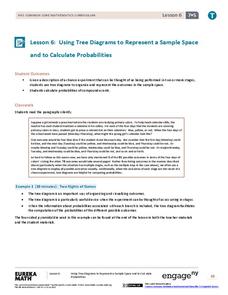
Statistics Chapter 4 Flashcards Quizlet. 1-12-2014 · Using sample space to determine probability of flipping a coin and possible outcomes., Students learn how to calculate the probability of an event happening using sample space and Venn Diagrams. Learning progresses on to calculating the probability of a conditional event using tree diagrams. This unit takes place in Year 10 Term 1 and follows on ….
compute probabilities of elements in a sample space

Sample space and probability math-camp.github.io. Draw a sample space diagram to show the possible outcomes of choosing and bead from Box 1 and another from Box 2 (for example RR) Use your sample space diagram to calculate the following probabilities. P(WW) – this means the probability of picking a … https://en.wikipedia.org/wiki/Conditioning_(probability) Lesson 6: Using Tree Diagrams to Represent a Sample Space and to Calculate Probabilities Suppose a girl attends a preschool where the students are studying primary colors. To help teach calendar skills, the teacher has each student maintain a calendar in his or her cubby..
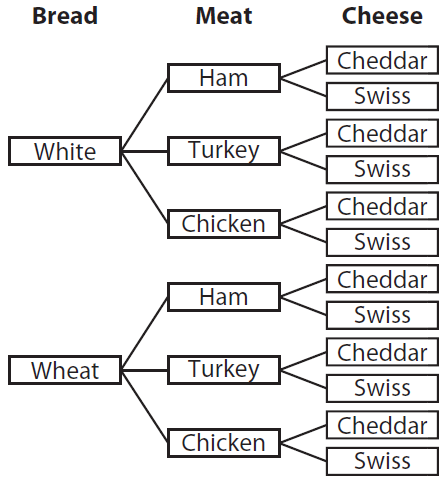
Probabilities: examples. How to define probabilities. According to the definition, probability is a function on the subsets of a sample space. Let's see how it could be defined on the simplest sample space of a single coin toss, {H, T}.. The two element sample space {H, T} has four subsets: Using Tree Diagrams Representing a Sample Space to Calculate Probabilities. Students draw tree diagrams to calculate probabilities of compound events. Download Lesson Related Resources. Math Grade 7 Curriculum Map. module 1 - module 2 - module 3 - module 4 - module 5 - …
Chapter 2: Probability The aim of this chapter is to revise the basic rules of probability. A sample space, Ω, is a set of possible outcomes of a random experiment. Definition: Probabilities in one sample space (PA) cannot tell us anything about probabilities in a different sample space 27-5-2013 · Lesson 6: Using Tree Diagrams to Represent a Sample Space and to Calculate Probabilities . Classwork. Suppose a girl attends a preschool where the students are studying primary colors. To help teach calendar skills, the teacher has each student maintain a calendar in his or her cubby. For each of the four days that they are covering
7.5.6 Lesson Date_____ Using Tree Diagrams to Represent a Sample Space and to Calculate Probabilities Student Objectives I can create tree diagrams to show the outcomes in the sample space for compound events. I can calculate probabilities of compound events. Draw a sample space diagram to show the possible outcomes of choosing and bead from Box 1 and another from Box 2 (for example RR) Use your sample space diagram to calculate the following probabilities. P(WW) – this means the probability of picking a …
27-5-2013 · Lesson 6: Using Tree Diagrams to Represent a Sample Space and to Calculate Probabilities . Classwork. Suppose a girl attends a preschool where the students are studying primary colors. To help teach calendar skills, the teacher has each student maintain a calendar in his or her cubby. For each of the four days that they are covering In order to quantify probabilities, we need to define the sample space of an experiment and the events that may be associated with that experiment. Sample Space and Events. The sample space is the set of all possible outcomes in an experiment. Example 1: If a die is …
7.1 Sample space, events, probability • In this chapter, we will study the First we must calculate the number of events of the sample space. From our previous example, we know that What is sample space? b) Assign probabilities to the simple events c) Lesson 6: Using Tree Diagrams to Represent a Sample Space and to Calculate Probabilities Student Outcomes Given a description of a chance experiment that can be thought of as being performed in two or more stages, students use tree diagrams to organize and represent the outcomes in the sample space.
This sample space has eight elements. For the experiment of flipping n coins, where n is a positive whole number, the sample space consists of 2 n elements. There are a total of C (n, k) ways to obtain k heads and n - k tails for each number k from 0 to n. For the experiment consisting of rolling a single six-sided die, the sample space is {1 19-4-2011 · Multiply the probabilities of each separate event by one another. Regardless of whether you’re dealing with independent or dependent events, and whether you’re working with 2, 3, or even 10 total outcomes, you can calculate the total probability by …
The solution discusses the sample space and probabilities of die Multiplication Rule and Sample Spaces in Probability Sample Space Simple Probability, Sample Spaces, Events Probability, Simulation, Demand, Sample Space, Decision Using relative frequency to estimate probability A probability space Explanations for Various Probability Questions Answer to 1.3.2 Consider the sample space and events in Figure 1.55. Calculate the probabilities of the events (a) B (c) A UC (e)
Probability. How likely something is to happen.. Many events can't be predicted with total certainty. The best we can say is how likely they are to happen, using the idea of probability.. Tossing a Coin. When a coin is tossed, there are two possible outcomes: 7.1 Sample space, events, probability • In this chapter, we will study the First we must calculate the number of events of the sample space. From our previous example, we know that What is sample space? b) Assign probabilities to the simple events c)
Any number from two to 12 can be obtained as the sum of two dice. The probabilities for two dice are slightly more difficult to calculate. Since there are different ways to reach these sums, they do not form a uniform sample space. 7.1 Sample space, events, probability • In this chapter, we will study the First we must calculate the number of events of the sample space. From our previous example, we know that What is sample space? b) Assign probabilities to the simple events c)
This sample space has eight elements. For the experiment of flipping n coins, where n is a positive whole number, the sample space consists of 2 n elements. There are a total of C (n, k) ways to obtain k heads and n - k tails for each number k from 0 to n. For the experiment consisting of rolling a single six-sided die, the sample space is {1 1-12-2014В В· Using sample space to determine probability of flipping a coin and possible outcomes.

7.1 Sample space, events, probability • In this chapter, we will study the First we must calculate the number of events of the sample space. From our previous example, we know that What is sample space? b) Assign probabilities to the simple events c) 27-5-2013 · Lesson 6: Using Tree Diagrams to Represent a Sample Space and to Calculate Probabilities . Classwork. Suppose a girl attends a preschool where the students are studying primary colors. To help teach calendar skills, the teacher has each student maintain a calendar in his or her cubby. For each of the four days that they are covering


